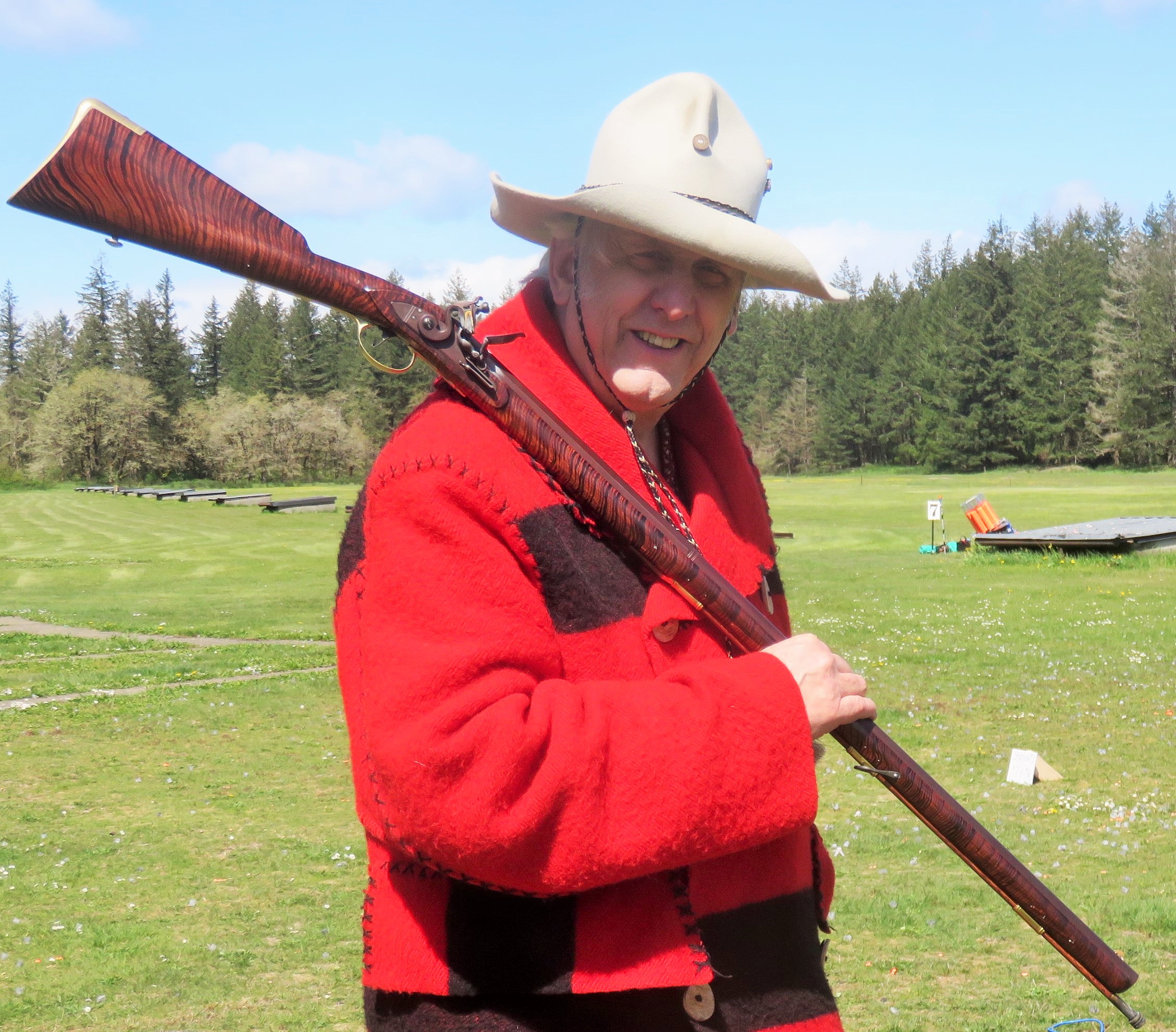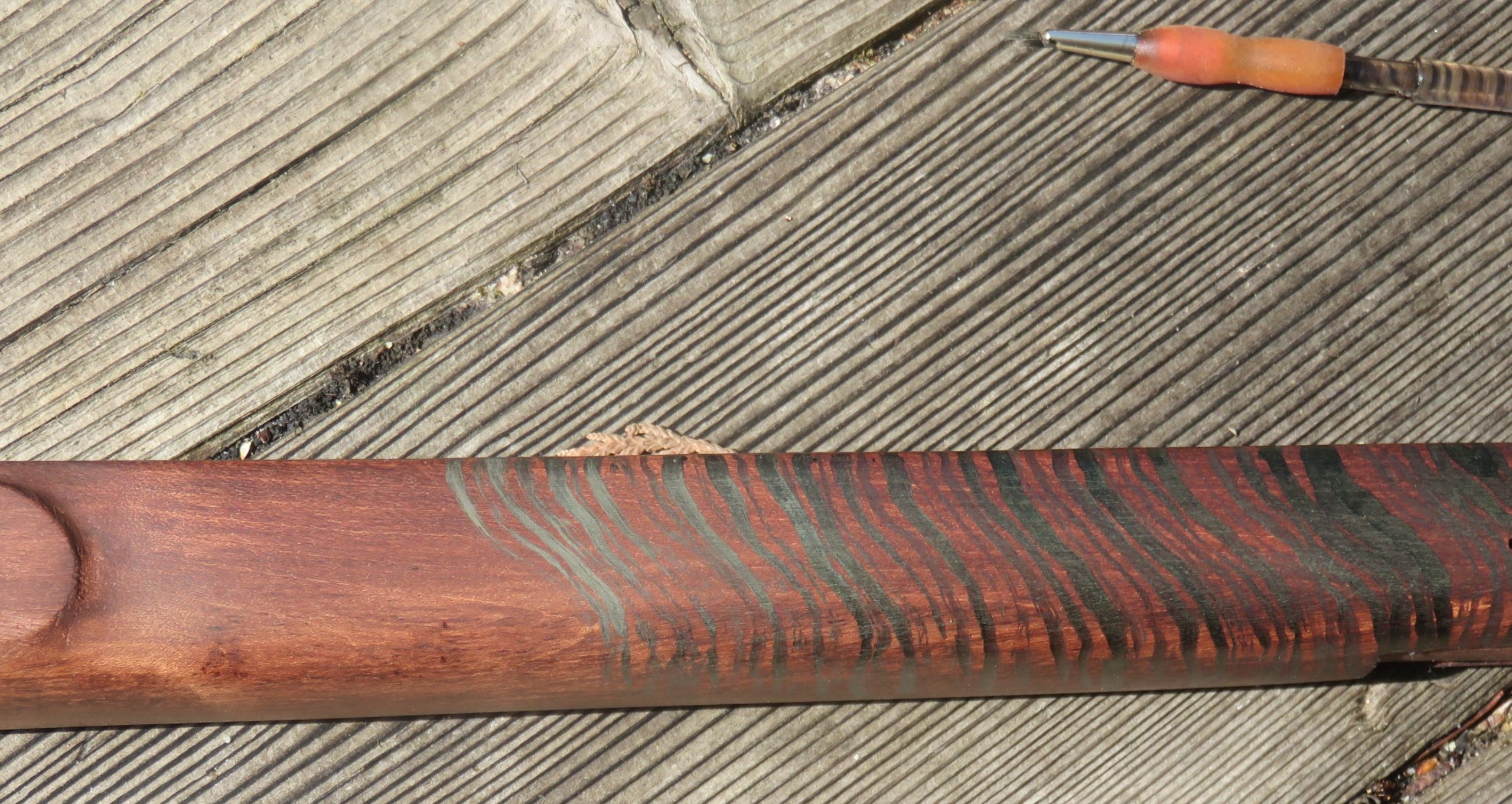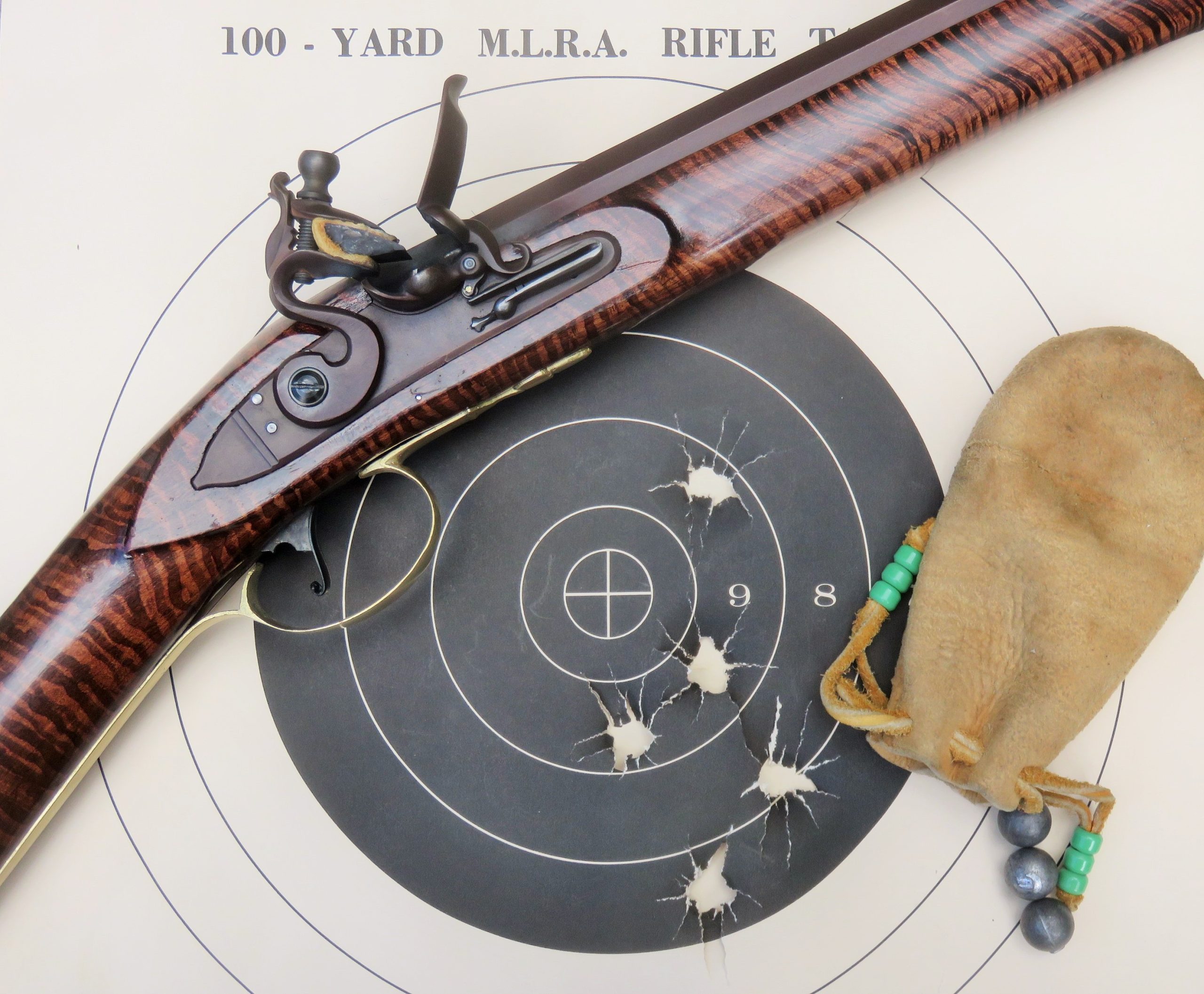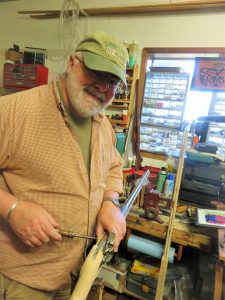
By Mike Nesbitt | Contributing Editor
One flintlock that I really should tell you about is one that I’ve had for a couple of years, after building it from a TVM standard kit.
This is my Fowler, and I spell that with a capital “F” because as TVM’s Fowler, it is a proper name. This 20-gauge flintlock is a fine all-around muzzleloading shotgun and its story really needs to be told.
On Tennessee Valley Muzzleloading’s web site (www.tvmnatchez.com), only a few notes about their Fowler are found and yet those notes are complete and to the point. After all, their Early American Fowler isn’t a copy of any specific gun; it has a combination of lines and features that were found on the fowlers from many old-time makers. This is a gun that could be called the first of American firearms and those old fowlers were certainly taking game before rifles, with their rifled barrels, became the real focus for American shooting.
The Fowler is not a new offering by TVM. Lots of blackpowder shooters already have one and they certainly enjoy the versatility that a good smoothbore possess. That versatility includes shooting loads of birdshot, of whatever size you pour down the muzzle, to firing rather accurate loads with a patched round ball.

Let me begin this description by saying it is made with the best of parts. The real heart to any flintlock is the lock itself and this gun generally uses a large Siler flint lock. I wanted an L&R lock on my gun and at first, I requested the L&R Manton lock. My thinking was that the smaller Manton lock would be faster, able to give quicker ignition.
Maybe it is but Matt Avance, the boss man at TVM, recommended the L&R Durs Egg lock, mainly because the smaller Manton can look out of place on a fairly large gun like the Fowler. So, I quickly agreed, and my gun did come with the Durs Egg lock. Keep a good sharp flint in the jaws of the cock and that lock will spark.
The octagon-to-round barrel is very smooth on the inside (outside too) with a standard 20 gauge bore. Plain maple is the standard wood for the Fowler’s stocks, with higher grades of wood available as added cost options. The trigger and other pieces of hardware are available in either brass or browned steel which makes the TVM Fowler a good piece combining quality and authenticity in a dependable smoothbore for buckskinning, hunting, and muzzleloading competition.
Standard barrel lengths for the TVM Fowler are 36- and 42-inches. I wanted my 20-gauge to be rather handy for hunting in the timber so I selected the 36-inch tube. Now, after shooting this gun many times, I can say that the Fowler with the 36-inch-long barrel feels and handles very good.
The length of pull on TVM guns is as ordered, each stock is individually custom cut so you must specify the length of pull you desire. On my Fowler that length is 13 ¾-inches, just slightly longer than what I like for a rifle’s stock length. When I bring this flintlock smoothbore to my shoulder, I’m looking right down the barrel. There will be no searching for the bead when the grouse are flying in the fall.
Other features in this kit include the brass furniture. The option for furniture is either steel or brass. My kit also came with the added optional fittings for a sling, a swivel at the front and a large button at the back. That sling swivel would be fitted with its screw through the middle barrel lug and positioned so the swivel would “fall” down on the middle ramrod pipe, so it could not block the ramrod from going through the ramrod pipes. As far as hardware goes, that completed the kit as ordered from TVM.
There was one more stipulation, I asked for very plain straight grained wood with no figure. That was just what I received and let me compliment TVM for it. My reason for requesting very plain wood was because I intended to artificially stripe the stock, somewhat like Leman striped his stocks. That might be just a bit out of place on a typical Fowler but my gun is going to be mine and not typical… We’ll have more to say about striping the stock as we go on.

Everything about the kit looked very good and my first step was to take some pictures of the kit and a couple of the parts included. Then I packed all the parts and fixin’s up again and took them to Allen Cunniff’s diggin’s where most of the work would be done. Allen has the tools and the know-how for this kind of work.
Both Allen and I had been students or apprentices under Dave Dolliver. Dave was a fantastic teacher, for sure. Then, after Dave sold his shop and moved into smaller quarters, he would go to Allen’s shop to continue building his guns. I would join them now and then, either to work on something new or to fix/update a gun that needed attention. When Dave passed away, at just a couple of days shy of turning 89, he left a terrible void. Allen filled a little of that void by finishing a .40 caliber Southern Rifle that Dave had started but left un-done.

At Allen’s, the first step taken with this Fowler kit was to remove the tape that held the butt plate in place and to complete the fitting of the butt plate. The butt plate comes “fitted,” yes, that’s true. But it is fitted about as well as can be done with a bandsaw. It takes just a bit more fitting, done with a small file, to get the gaps out from under the butt plate so it will completely meet the stock. The stocks are shipped with the butt plates taped in place to help protect the stock while being transported. Once the butt plate was fitted more closely, the screw holes needed to be drilled and then the butt plate was firmly attached to the stock.
Then the gun was complete as far as assembly goes. Allen had even browned the lock, barrel, and trigger. In addition to that, he had heat blued the screw heads. The only thing left to be done was to finish the wood and that was my department. So, we took all of the metal pieces off of the stock, gave the maple stock a coating of walnut stain, and I took the wood back to my base camp for the striping and finishing.
The artificial striping, as I’ve described before, was done using Lincoln’s dark brown leather dye, painted on with a very small brush, “painting” each line at a time. My method includes dipping just the point of the brush into the die, and then painting as many lines as possible before the dye is completely gone from the brush. This means the first line will be the boldest, and the lines keep getting thinner and “weaker” until they basically disappear. And don’t make those lines too straight. Nature doesn’t usually stripe wood with straight lines. Artificially striping a stock this way takes a couple of hours per side of the stock and that does seem to be slow. Of course, nature takes a lot more time than that… I hand-striped one side on the first day and did the second side the afternoon of the second day.
The artificial stripes are just a little bit darker than the walnut stained stock, so the lines are not outstanding or in any great contrast to the darkened wood. Those stripes are actually hard to see until the finish is applied. After the finish is applied, the lines do stand out and dramatically so! Let me say that I was very pleased with the artificial striping done on this stock.
A total of nine coats of the Tru-Oil were applied and soon after the final coating was dry, the stock was taken back to Allen’s shop where the gun was assembled for the last time. As each part was put in place and secured, the gun was looking better and better. Then, and it almost seemed like it was suddenly, the Fowler was finished. For at least a little while, I was too pleased to shoot it! This gun just needed to be admired, so admire it I did…
The kits from TVM are so complete they even include a black English flint of the right size plus a piece of leather to wrap the flint with, which helps in securely holding the flint in the jaws of the cock (the flintlock’s “hammer”).
The fit and feel of the Fowler’s stock are features that attract a lot of blackpowder smoothbore shooters, perhaps leading them away from the Northwest trade guns which are also smoothbores. The slightly curved buttplates simply join with the shoulder quite nicely and for taking shots quickly or on moving targets the advantage of that fit and feel can’t be ignored.

Some of my first shots with this flintlock Fowler were taken on a trailwalk at a rendezvous, where shooting is done at gongs and clangers in addition to a few flying clay pigeons. For those gongs, the projectile used is a single round ball and for my shooting that patched .595” round ball was seated over 60 grains of GOEX FFFg black powder. That is certainly a good starting load (basically matching the powder charge in grains to the caliber, .60 caliber = 60 grains of powder) and while others claim to favor higher loads or larger powder charges, they generally want those heavier loads for hunting. With that load the gun shot very well, fast and consistently.
The shot load I used, just in case you’d like to try it, started with 60 grains of FFFg powder under a dose of #8 measured in a 60-grain powder measure. In shotgun shooter’s terms, that’s just under 2 ¼ drams of powder and just under 7/8-ounce of shot.
For wads, I mostly make my own. My 20-gauge over-powder wads are punched, using a 5/8-inch gasket punch, out of leather, scraps of leather from some of my other projects. On top of the over-powder wad I like to use a lube-wad which I punch from blanket scraps, then soak them in melted beeswax or perhaps a black powder bullet lube. The lubed wads help to keep the fouling in the bore soft, which aids reloading for repeated shots. Finally, an over-shot wad completes the loading and those are punched out of a thin but still cardboard, such as milk carton sides. Wads can be purchased, certainly, but it isn’t difficult or very time consuming to make good wads yourself.
My Tennessee Valley Muzzleloading 20-gauge flintlock Fowler is certainly a real pleasure to shoot and it’s going to be a very steady companion at many future rendezvous and hunting camps, so don’t be terribly surprised if you hear about it again. TVM often needs over eight months to fill an order and this standard made-to-order kit is priced at $1,175. TVM also offers a “builder’s kit” which include all of the same parts but with less of the assembly work already done and the builder’s kit for the Fowler is priced at $1,000. Either kit, depending on the builder, will make a very good gun.




